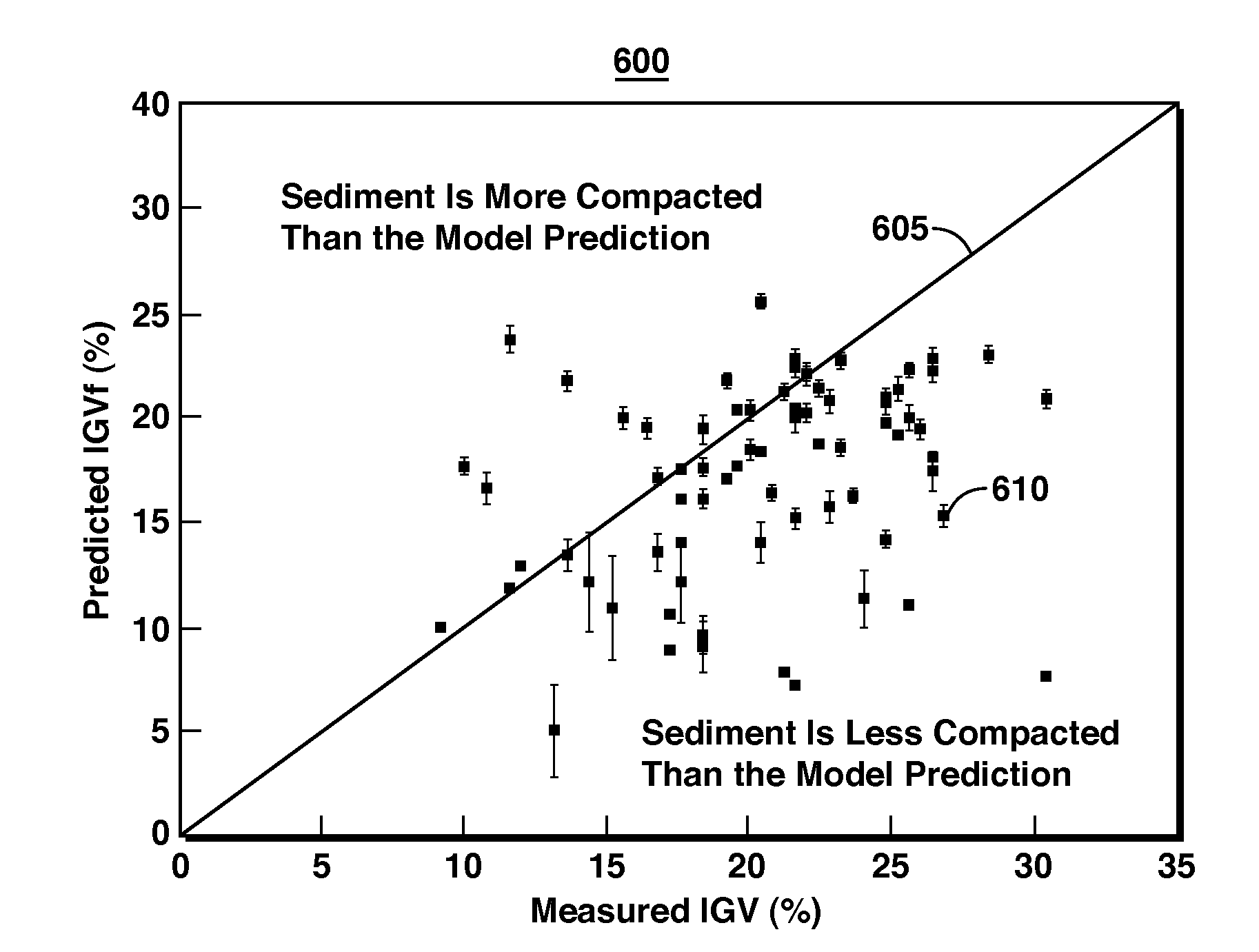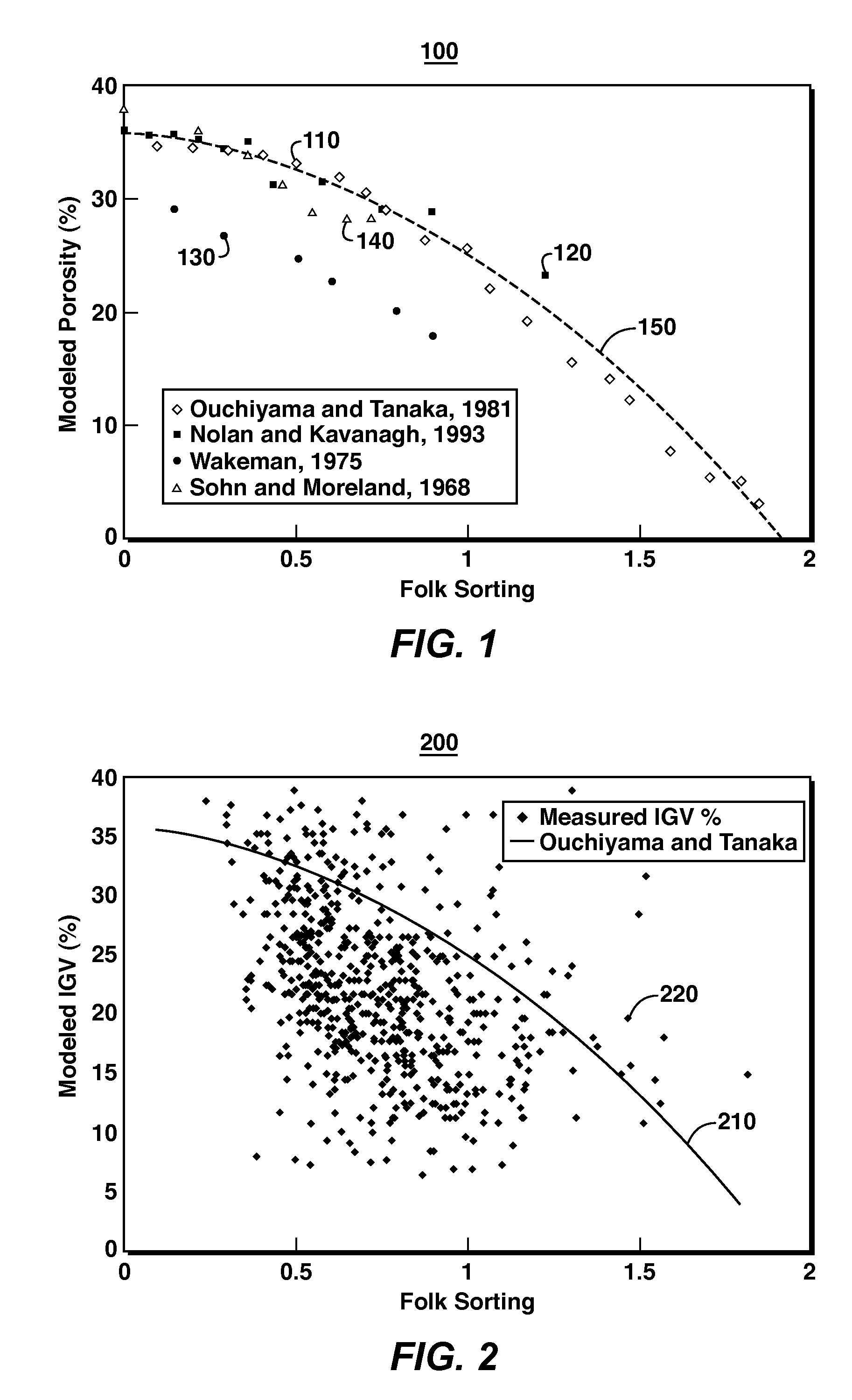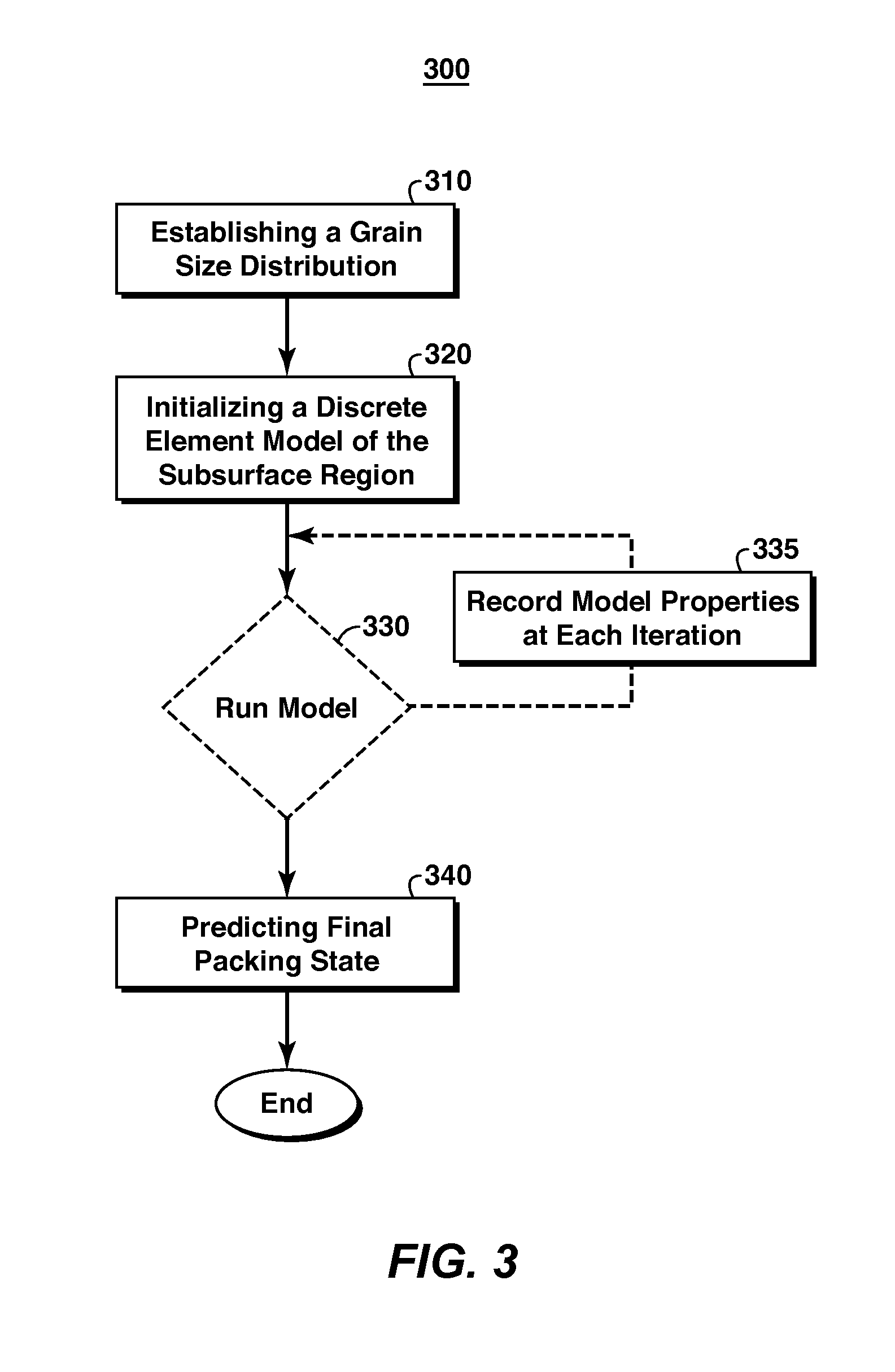Predicting A Compaction Point Of A Clastic Sediment Based on Grain Packing
a technology of clastic sediment and compaction point, applied in the field of oil and gas exploration and production, can solve the problems of limiting the stored resource, and the compaction curve based on empirical calibration is not fundamentally predictive, so as to reduce the stability condition and reduce the stability
- Summary
- Abstract
- Description
- Claims
- Application Information
AI Technical Summary
Benefits of technology
Problems solved by technology
Method used
Image
Examples
Embodiment Construction
[0029]The present invention can be embodied in many different forms and should not be construed as limited to the embodiments set forth herein; rather, these embodiments are provided so that this disclosure will be thorough and complete, and will fully convey the scope of the invention to those having ordinary skill in the art. Furthermore, all “examples” or “exemplary embodiments” given herein are intended to be non-limiting, and among others supported by representations of the present invention.
[0030]Certain steps in the methods and processes described herein must naturally precede others for one or more of the exemplary embodiments to function as described. However, the exemplary embodiments are not limited to the order of the steps described if such order or sequence does not adversely alter the functionality of the described method or process. That is, it is recognized that some steps may be performed before or after other steps or in parallel with other steps without departing...
PUM
| Property | Measurement | Unit |
|---|---|---|
| porosity | aaaaa | aaaaa |
| grain size distribution | aaaaa | aaaaa |
| porosity | aaaaa | aaaaa |
Abstract
Description
Claims
Application Information
 Login to View More
Login to View More - R&D
- Intellectual Property
- Life Sciences
- Materials
- Tech Scout
- Unparalleled Data Quality
- Higher Quality Content
- 60% Fewer Hallucinations
Browse by: Latest US Patents, China's latest patents, Technical Efficacy Thesaurus, Application Domain, Technology Topic, Popular Technical Reports.
© 2025 PatSnap. All rights reserved.Legal|Privacy policy|Modern Slavery Act Transparency Statement|Sitemap|About US| Contact US: help@patsnap.com



